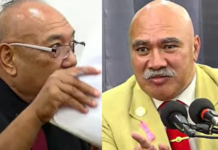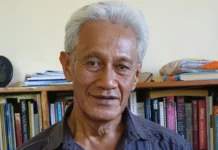Supreme Leader Ayatollah Ali Khamenei has been taken to a secure location inside Iran amid heightened security, Reuters sources say, a day after Israel killed the head of Iran-backed Lebanese group Hezbollah in a strike on Beirut.
Iran’s Supreme Leader Ayatollah Ali Khamenei has been taken to a secure location inside the country, according to Reuters sources. (File photo) Photo: AFP / HO / Khamenei.IR
The move to safeguard Iran’s top decision-maker is the latest show of nervousness by the Iranian authorities as Israel launched a series of devastating attacks on Hezbollah, Iran’s best armed and most well-equipped ally in the region.
Reuters reported this month Iran’s elite Revolutionary Guards Corps – the ideological guardians of the Islamic Republic – had ordered all of its members to stop using any type of communication devices after thousands of pagers and walkie-talkies used by Hezbollah blew up.
Lebanon and Hezbollah say Israel was behind the pager and walkie-talkie attacks. Israel neither denied nor confirmed involvement.
The two regional officials briefed by Tehran and who told Reuters that Khamenei had been moved to a safe location also said Iran was in contact with Hezbollah and other regional proxy groups to determine the next step after Nasrallah’s killing.
The sources declined to be identified further due to the sensitivity of the matter. As well as killing Nasrallah, Friday’s strikes by Israel on Beirut killed Revolutionary Guards’ deputy commander Abbas Nilforoushan, Iranian media reported on Saturday. Other Revolutionary Guard’s commanders have also been killed since the Gaza War erupted last year and violence flared elsewhere.
Khamenei issued a statement later on Saturday, following Israel’s announcement that Nasrallah had been killed, saying: “The fate of this region will be determined by the forces of resistance, with Hezbollah at the forefront.”
“The blood of the martyr shall not go unavenged,” he said in a separate statement, in which he announced five days of mourning to mark Nasrallah’s death.
Nasrallah’s death is a major blow to Iran, removing an influential ally who helped build Hezbollah into the linchpin of Tehran’s constellation of allied groups in the Arab world. Iran’s network of regional allies, known as the “Axis of Resistance”, stretch from Hezbollah in Lebanon to Hamas in Gaza, Iran-backed militias in Iraq and the Houthis in Yemen. Hamas has been fighting a war with Israel for almost a year, since its fighters stormed into Israel on 7 October. The Houthis, meanwhile, have launched missiles at Israel and at ships sailing in the Gulf of Aden and the Red Sea along the Yemeni coast.
Hezbollah has been engaged in exchanges of fire across the Lebanese border throughout the Gaza War and has repeatedly said it would not stop until there was a ceasefire in Gaza.
After the pager and walkie-talkies strikes, one Iranian security official told Reuters that a large-scale operation was underway by the Revolutionary Guards to inspect all communications devices. He said most of these devices were either homemade or imported from China and Russia.
The official said Iran was concerned about infiltration by Israeli agents, including Iranians on Israel’s payroll and a thorough investigation of personnel has already begun, targeting mid and high-ranking members of the Revolutionary Guards.
In another statement on Saturday, Iranian President Masoud Pezeshkian said the United States had played a role in Nasrallah’s killing as a supplier of weapons to Israel.
“The Americans cannot deny their complicity with the Zionists,” he said in the statement carried by state media.
– Reuters








